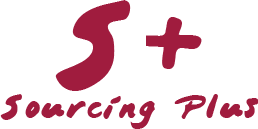Up to the early 90's, Procurement was emerging from the dumping ground for failed employees, just good enough to administer Purchase Orders.
On the academic side, scholars like Michael Porter or Peter Kraljic began to formalize a more strategic approach to managing suppliers. The role of purchasing was, according to Porter, to find mechanisms to offset or surmount the sources of suppliers power (Competitive Strategy, p123).
In firms, it became an important field for management at that time, offering abundant opportunities . By consolidating volume across plants and harmonizing specifications, companies were able to pressurize your suppliers to give better terms, and to work harder for the business. Suppliers were forced to adapt and improve, or die. Some disappeared or were acquired. Negotiation skills were creating value by lowering the cost of the Bill of Material.

As the function evolved at the end of the XXth century, leading organizations introduced strategic vision of the entire supply chain. They gained insights on the Total Cost of Ownership and redistributed responsibilities to reduce it through cross-functional initiatives. More recently, e-Procurement solutions provided an additional transaction cost reduction. The best suppliers opened their books, discussed their cost structure and their ideas to optimize interface costs, set-up and management costs. Enlightened organizations helped those suppliers by auditing their plants and introducing their best practices on lean operations. A few started observing with interest the approach of Toyota, for instance, who was using its supplier network as a resource. The concept of extended enterprise had emerged.
Today, the best organizations are structuring their supplier management to generate true shareholder value: to enlist selected suppliers in their growth and superiority strategy, to be better than their best competitors. This requires a radical change in the tools and culture of supplier management, as the supplier and the client must be aiming for the same long term strategic objectives.
Summary of Supplier Management Evolution
| Dimension | Traditional | Best Practices |
|---|---|---|
| Scope | Tactical | Strategic |
| Impact | Cost | Value |
| Depth | Production | All spend |
| Process | Administration | Intelligence |
| Culture | Historical Benchmarks | Competitive Benchmarks |
| Organization | Problem Solving | Global Vision |
| People | Second tier | Master level |
| Governance | Conflict of Interest | Sustainability |
